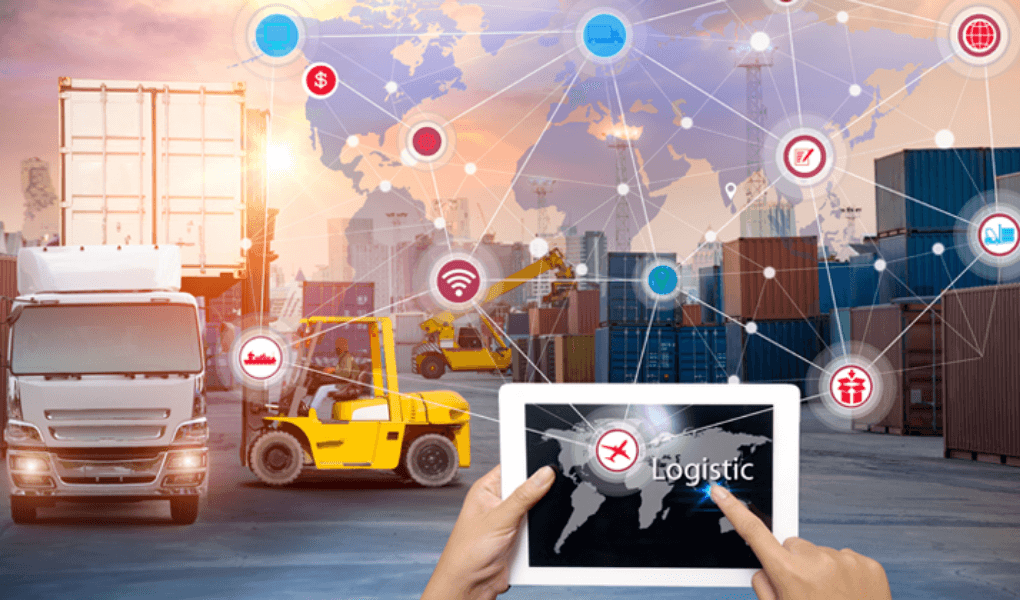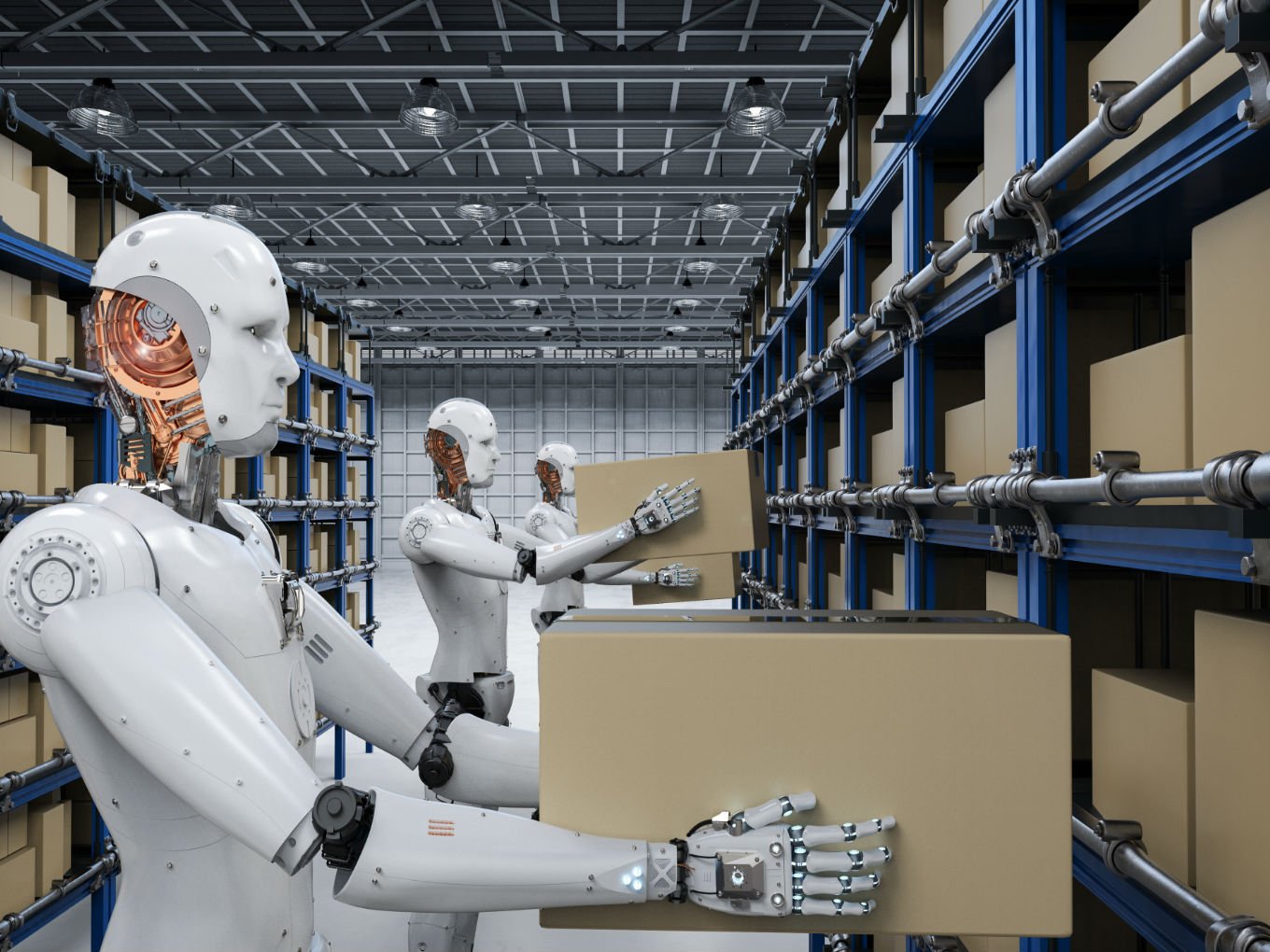key takeaways:
1. Enhanced Efficiency: Automation and AI technologies have significantly improved the efficiency of logistics and supply chain operations. Tasks that were previously manual and time-consuming, such as inventory management, order processing, and route optimization, can now be automated, leading to faster and more accurate processes.
2. Inventory Optimization: Automation and AI enable real-time inventory tracking and analysis. This helps organizations optimize their inventory levels, reduce stockouts, minimize carrying costs, and improve overall supply chain responsiveness. Predictive analytics and demand forecasting algorithms assist in accurately predicting demand patterns and adjusting inventory levels accordingly.
3. Improved Visibility and Transparency: Automation and AI provide increased visibility and transparency across the supply chain. With the integration of sensors, RFID tags, and IoT devices, organizations can track and monitor shipments, warehouse conditions, and product quality at every stage
Introduction
Automation and artificial intelligence (AI) are revolutionizing the world of logistics and supply chains, presenting new opportunities for efficiency and cost reduction. By replacing manual labor with machines and utilizing data analysis and predictive analytics, companies across all sectors can enhance productivity, accuracy, speed, and dependability in managing their logistics processes. This article explores the benefits that automation and AI bring to supply chain and logistics operations while addressing the challenges and restrictions associated with their implementation.


Understanding Automation
Automation and AI are reshaping supply chains and logistics by streamlining processes, reducing errors, and lowering labor costs. Automated systems improve accuracy and efficiency, eliminating the need for extensive manual data entry. They simplify inventory management and route planning, resulting in faster deliveries at reduced costs. AI’s predictive analytics capabilities empower businesses to anticipate customer needs effectively and proactively manage potential issues before they occur, thereby minimizing risks.
Impact of Automation on Logistics
The integration of automation and AI in logistics operations has significantly impacted route planning, delivery robotics, warehouse automation, and inventory management. AI systems employ predictive analytics to accurately predict customer needs, optimizing delivery routes and minimizing wasteful travel time. Automated route planning systems account for variables such as traffic patterns and weather conditions, enhancing efficiency and reducing costs. Big data analysis enables businesses to discover correlations between different order types and customer behavior patterns, leading to improved pricing strategies and supply chain optimization.
Impact of Automation on Supply Chains
Automation has transformed the management and tracking of goods in supply chains. Real-time visibility provided by automation allows businesses to respond quickly to changes and discrepancies, resulting in smoother operations, improved customer service, and enhanced overall efficiency. Automation’s predictive analytics capabilities enable accurate forecasting of customer needs, facilitating better inventory stocking and production planning decisions. Automated document processing streamlines administrative tasks, minimizing human input errors, and accelerating paperwork completion. Automatic routing algorithms optimize delivery routes, ensuring faster and cost-effective deliveries by considering variables such as traffic and weather conditions.
Challenges and Restrictions of Automation and AI in Logistics and Supply Chain
Data security emerges as a critical consideration when implementing automation and AI in supply chains and logistics. Automated systems are vulnerable to cyberattacks, which can lead to the loss of sensitive customer information and business disruptions. Compliance with regulations regarding data protection is essential for businesses to safeguard collected or processed information.
Cost is another important factor to consider before investing in automation technology. Comprehensive cost-benefit analyses should be conducted to assess the expenses associated with purchasing hardware or software and hiring staff with the required technical expertise. Additionally, ethical concerns arise regarding the impact of automation on job losses and privacy issues. Businesses must adhere to relevant laws and regulations, mitigating negative societal effects and avoiding legal disputes.
Automation and AI have completely transformed the management of logistics operations. Automation streamlines procedures, reduces costs, and accelerates delivery times by simplifying inventory management and route planning. AI’s predictive analytics capabilities enhance forecasting accuracy and optimize delivery routes in complex networks. While challenges such as data security and high upfront costs exist, businesses can mitigate risks by ensuring compliance and conducting comprehensive cost-benefit analyses. In the long run, artificial intelligence offers numerous advantages that empower businesses to enhance logistics performance, increase effectiveness, and maintain greater control over their supply chains.
Conclusion
In conclusion, the transformation of logistics and supply chain through automation and AI has brought about significant advancements and improvements in the industry. The integration of automation technologies and AI algorithms has enhanced efficiency, optimized inventory management, improved visibility, and enabled better decision-making throughout the supply chain.
By automating manual processes, organizations can streamline operations, reduce human error, and achieve higher productivity. The utilization of AI algorithms and predictive analytics has facilitated accurate demand forecasting, leading to optimized inventory levels and reduced costs. Real-time tracking and monitoring capabilities have enhanced visibility and transparency, allowing organizations to proactively address issues and ensure timely deliveries.
Furthermore, automation and AI have paved the way for innovative solutions such as autonomous vehicles, drones, and robotics


FAQ
How artificial intelligence is transforming the logistics industry?
Artificial intelligence (AI) is transforming the logistics industry in several significant ways:
1. Demand Forecasting and Planning: AI algorithms can analyze large volumes of historical data, market trends, and external factors to predict demand patterns accurately. This enables logistics companies to optimize their inventory levels, plan for capacity requirements, and make informed decisions about procurement and production.
2. Route Optimization: AI-powered route optimization algorithms consider various factors such as traffic conditions, weather, delivery deadlines, and vehicle capacity to determine the most efficient delivery routes. This helps reduce transportation costs, improve delivery times, and enhance overall operational efficiency.
3. Warehouse Automation: AI-driven automation technologies, such as robotic process automation (RPA) and autonomous robots, are being used to automate repetitive and labor-intensive tasks in warehouses. These technologies can handle tasks like picking, packing, sorting, and inventory management, leading to increased speed
What is the impact of artificial intelligence on logistics and supply chain management?
Artificial intelligence (AI) has a significant impact on logistics and supply chain management:
1. Demand Forecasting and Planning: AI algorithms can analyze vast amounts of data and identify complex patterns to accurately forecast demand. This enables organizations to optimize inventory levels, plan production schedules, and improve resource allocation. Accurate demand forecasting reduces stockouts, minimizes excess inventory, and enhances customer satisfaction.
2. Route Optimization and Logistics Planning: AI algorithms optimize transportation routes based on various parameters such as traffic conditions, delivery deadlines, and vehicle capacity. This helps reduce transportation costs, minimize fuel consumption, and improve delivery efficiency. AI can also assist in strategic logistics planning, determining optimal warehouse locations and distribution network design.
3. Supply Chain Visibility and Risk Management: AI-powered systems provide real-time visibility into the supply chain, enabling organizations to track shipments, monitor inventory levels, and identify bottlenecks. AI algorithms can detect anomalies and potential disruptions, allowing proactive risk management and timely mitigation. This ensures smoother operations, minimizes disruptions, and enhances supply chain resilience.
4. Warehouse Automation: AI technologies, such as robotics and machine learning, automate warehouse operations. Robotic systems can handle tasks like picking, sorting, and inventory management, reducing labor costs and improving accuracy. Machine learning algorithms analyze historical data to optimize warehouse layout, inventory placement, and order fulfillment processes.
How automation is transforming the supply chain?
Automation is transforming the supply chain in several impactful ways:
1. Streamlined Operations: Automation technologies are streamlining various supply chain processes, eliminating manual and time-consuming tasks. Automated systems can handle tasks such as order processing, invoicing, inventory management, and data entry with speed and accuracy, reducing human error and increasing operational efficiency.
2. Improved Inventory Management: Automation enables real-time tracking and monitoring of inventory levels, allowing organizations to maintain optimal stock levels. Automated systems can trigger reorder points, generate purchase orders, and track inventory movements, reducing stockouts and overstocking. This leads to improved inventory turnover, reduced holding costs, and enhanced customer satisfaction.
3. Enhanced Supply Chain Visibility: Automation provides greater visibility into supply chain operations. Through the integration of sensors, IoT devices, and data analytics, organizations can monitor and track shipments, warehouse conditions, and product quality in real-time. This visibility enables proactive issue identification, timely interventions, and improved decision-making across the supply chain.
4. Efficient Order Fulfillment: Automation optimizes order fulfillment processes, from picking and packing to shipping. Automated systems can prioritize orders based on predefined rules, optimize picking routes, and automate packaging and labeling. This results in faster order processing, reduced errors, and improved customer satisfaction.
How is AI and machine learning changing the way we manage the supply chain?
AI and machine learning are revolutionizing supply chain management in several ways:
1. Demand Forecasting and Planning: AI and machine learning algorithms can analyze large volumes of data, including historical sales data, market trends, and external factors, to generate accurate demand forecasts. This helps organizations optimize inventory levels, plan production schedules, and improve resource allocation.
2. Predictive Analytics: AI and machine learning enable predictive analytics, which allows organizations to anticipate potential supply chain disruptions, such as delays, quality issues, or equipment failures. By analyzing historical data and identifying patterns, these technologies can provide early warnings and recommend proactive measures to mitigate risks.
3. Real-time Data Analysis: AI and machine learning algorithms can process real-time data from various sources, such as sensors, IoT devices, and social media, to gain insights into supply chain operations. This enables organizations to monitor inventory levels, track shipments, and identify bottlenecks in real-time, facilitating timely decision-making and proactive problem-solving.
4. Automation and Robotics: AI-powered automation technologies, including robotics and autonomous vehicles, are transforming warehouse operations and material handling. Robots can perform tasks such as picking, packing, and sorting with speed and precision, improving efficiency and reducing labor costs.
Hope this article was helpful for more checkout our previous blog post by clicking here


